Innovation in Tropical Forest Conservation: Q & A with Dr. Neil David Burgess

Rural scene in Tanzania. Photo by: Nika Levikov.
After years of discovering new species and setting up protected areas, Neil Burgesses’ career changed. Currently he is focused on community-driven conservation and on how to improve protected areas in Africa’s Eastern Arc mountains region.
“The involvement of communities or community conservation of one type or another…does work; it doesn’t work everywhere, but…community reserves do work and there is much more emphasis [on it], at least in East Africa on community–level conservation activities,” Burgess said in an interview with mongabay.com, adding that the trend now is how to make such programs pay as well.
“There is innovation in trying to make them economically viable to the people because basically it’s their land. And we’ve…piloted REDD through the voluntary carbon markets in Tanzania as well and seeing how to make that work.”
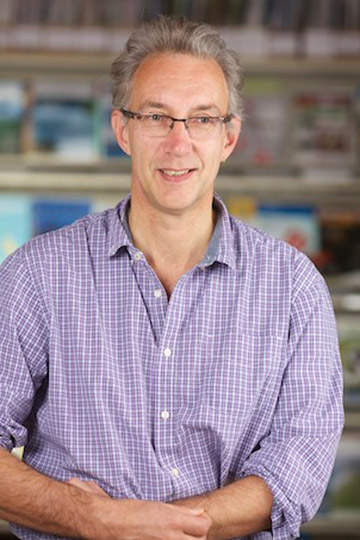 Neil Burgess. Photo courtesy of Neil Burgess. |
Neil Burgess has worked in the conservation field for over twenty years, mainly in Tanzania where he also lived for five years. He began his academic career at Bristol University, where he obtained a bachelor degree in biology and moved on to complete a PhD from Cardiff University and the Museum of Natural History in paleontology. Currently, Burgess serves as Professor of Conservation Biology at Copenhagen University and works part-time for the WWF US Conservation Program.
Burgess adds that conservationists and scientists have known for some time what the solutions are, but having the capacity to implement them and doing so in the right way is the real challenge: “I think people actually know what works and know what to do; it’s a matter of actually making it happen and on a big enough scale to make a difference.”
Along with proper solutions comes a concept so simple that it is often overlooked: fairness. After all, conservation too can be a complex endeavor where not everyone wins. But according to Burgess, we should never stop trying to achieve fairness for everyone, which will ensure that even if the battle is near impossible, it is the right one.
An interview with Neil David Burgess
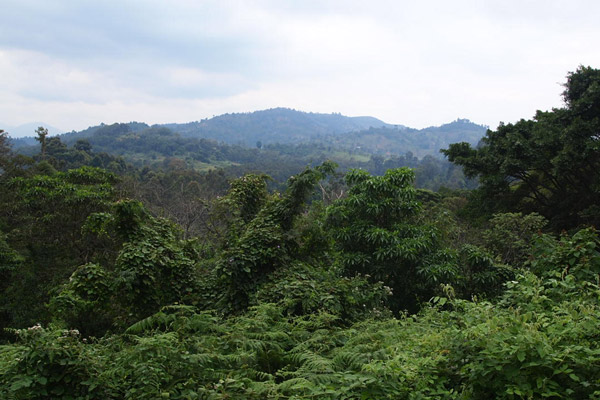
Montane forests in Tanzania. Photo by: Nika Levikov.
Mongabay: What is your background?
Neil Burgess: I was trained originally as a botanist and zoologist. I did a bachelors degree and I did a PhD in palaeontology. Since then I’ve been working in the UK, and I’ve been active in conservation, biodiversity, and ecosystem services for the last 20 years.
Mongabay: How long have you worked in tropical forest conservation?
Neil Burgess: I first went to Tanzania in 1989 and have been working there continuously until today on different aspects of forest conservation. I’ve also done some work in West Africa and in Sierra Leone in particular until they had a war.
Mongabay: What is the focus of your work?
Neil Burgess: The focus of my work overtime has changed…in the original period in the late 80s and 90s there was a lot of emphasis on biodiversity surveys and finding out what was in the forest in these different countries. And then…there was less funding for that kind of work overtime. Now I’m not involved in any on the ground biodiversity surveys…It’s changed more to be about ecosystem services and what forests can provide for people [like] water and carbon…It’s not necessarily the intrinsic biological values and although that’s still important…it’s turned into more what forests are for and how they’re used. And that involves much more work about people. So it’s also shifting to how do people interact with the natural world and how do they use habitats and how do they value different aspects. Different people value things in different ways.
Mongabay: Are you happy about this shift?
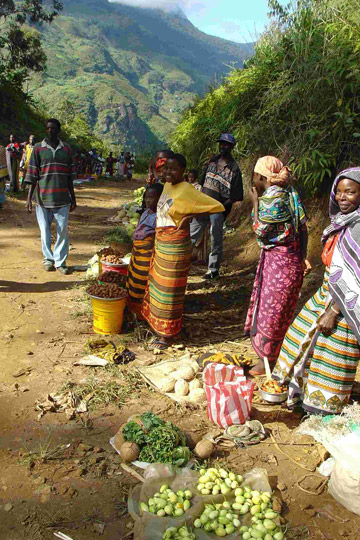 Market in Tanzania. Photo courtesy of Neil Burgess. |
Neil Burgess: Yes, I’m happy about this shift, but it would be nice to have some funding to do some biological research from time to time. But it’s partly a function of how careers and lives go. You start off doing stuff on the ground and end up doing more bureaucratic and administration things. I think it’s fine; we do try to value and use forests in a sustainable way, and the existence of a small frog is of less interest to people living in these [East African] countries often than immediate survival. So the pressing need for people to survive beyond their comfort is definitely there.
There are twice as many people as there was when we [scientists] started doing this. So [there’s] double the number of people all requiring nature to use, [which means] its biological value is more generally accepted; it’s just within everyone’s planning frameworks, within companies, within government, you’re not trying to prove a point anymore. You’re trying to see that used within the mainstream things, but it makes it a bit less exciting in terms of not going out and discovering new species anymore…You’re trying to keep areas that are known to be important safe in some way and managed appropriately.
Mongabay: What do you see at the next big idea or emerging innovation in tropical forest conservation and why?
Neil Burgess: I’m not sure there are emerging new great ideas. I suspect more of what’s out there is the same as it has been for a while. But I think some things are working and should be pursued. Standard protected areas can work, they don’t work everywhere, but saying they don’t work and we need to do something else is a bit untrue…The involvement of communities or community conservation of one type or another…does work; it doesn’t work everywhere, but…community reserves do work and there is much more emphasis [on it], at least in East Africa on community–level conservation activities…So they’re not exactly the next emerging thing. You might say they are, but they’ve been happening for 15 years. But…that will continue and that will become a bigger component to what people do.
Things like paying for carbon, REDD schemes, they’re being piloted. [There’s] lots of problems and lots of lessons being learned in different countries about how do you pay for keeping carbon and keeping services flowing…People have tried out a lot of things, like community conservation, [PES] and the involvement of business and companies. All of those things are in place…but to actually make tropical forest conservation work properly all of those things need to be bigger and scaled up and more effective, and at the same time you have increasing pressure from the opposite direction to turn land into agriculture, mining, or industrial plantations of one type or another.
So you’ve got conservation going in one direction and other things going in another direction and hitting each other in large parts of tropical forest area. So I’m not going to say there is any one new great thing.
Mongabay: You’ve touched this on a little bit already, but what are the obstacles and challenges to spreading these methods and approaches?

The future of Tanzania. Photo by: Nika Levikov.
Neil Burgess: There are many, that’s one of the problems. Obstacles at a national level if you’re talking about community conservation or [PES] schemes: if the country doesn’t have suitable policies and laws and regulations, if the government doesn’t have the mechanics to make it work, [then] it doesn’t work because it can’t work. So to make those things happen, laws and regulations need to be in place in each country on the planet and that’s a huge job in of itself…And once the mechanics are in place, then training, capacity building, changing the mind-set of the people who manage resources so there’s a big enough pool of people who know what to do and who are out there doing it, then it can go from being policy to being an actual policy that’s operationalized and implemented on the ground. And then you’ve got to communicate with other interest groups who might have more money or be more powerful than forest conservationists.
So forest conservation discussions have to be embedded also in the agricultural peoples’ discussions, for the mining peoples’ discussions and the big business discussions. And they increasingly are…And if you’ve got forest conservation in their standards, then they will try their best not to damage forests, but that’s some of the companies and there’s a lot of individuals who don’t give a damn about that and that’s just an opening for them to do what they need to or want to do. And there are large scales of inequitable distribution of resources and poor governance and corruption and a few other kinds of societal challenges to deal with as well.
Mongabay: Are you personally involved in any projects or research that represent emerging innovation in tropical forest conservation?
Neil Burgess: I’m involved in community-based forest conservation and community-based wildlife conservation initiatives in Africa setting up forest village reserves: trying to make them work, trying to get communities to benefit from them, to be able to get money [for local people] and to make them [residents] feel ownership. So on that community forest side of things there is innovation in trying to make them economically viable to the people because basically it’s their land. And we’ve…piloted REDD through the voluntary carbon markets in Tanzania as well and seeing how to make that work; and that’s not brand new, but at least [we’re] trying to get these things to work on the ground and make them operational and then learn lessons scientifically [about]: what does work, why does it work, where are there problems, could we do better and what’s likely to happen in the future. These things are working half/half and yet we need to double the areas of land for agriculture. What’s the future going to hold? Scenario planning is somewhat novel, but there’s no silver bullet that I’m working on.
Mongabay: Do you think that REDD could be the way of the future provided that it’s applied in the right way?
Neil Burgess: It could be. REDD can mean many things to different people. National scale REDD implemented by governments and across the entire country in one system, if the government is fair, equitable, sharing the money well, somewhat utopian, [then] it could work. If the government is corrupt and not doing things on behalf of its people, but on behalf of itself, it could be a disaster.
Nobody really knows which side of that it’s going to be because it’s not operational on that national scale anyway. In the various pilot projects that are out there doing voluntary carbon, things they can work. But they’re really hard and expensive to set up and the capacity in countries to do this is often lacking. The system is a bit complicated to be rolled out in many parts of the world, so getting scale out of voluntary carbon projects is quite tricky…but then people can’t make them easy because then nobody would be able to verify that the carbon would be safe and you wouldn’t be able to hold people to account. So all these things are necessary, but they are complicated and expensive and beyond the capacity of many people.
Mongabay: What do you think are the implications of putting a price tag on nature?
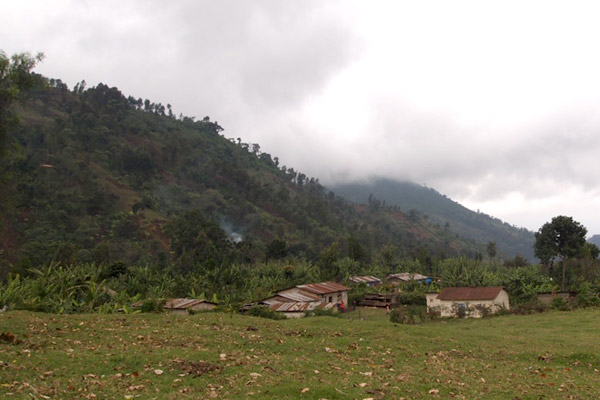
Rural settlement in Tanzania. Photo by: Nika Levikov.
Neil Burgess: I think showing that nature has value is really important because a lot of the decisions made by countries are purely economic decisions…Trying to turn it into a commodity and turn everything into a commodity that’s then just bought and sold, [for example] “that” endemic species is worth only $10 more than “that one over there”, I think that’s really not very helpful and potentially quite dangerous. If someone’s got really large amounts of money and says, “well your species isn’t worth very much anyway, I’ll just buy the lot and I choose what to do with them”, I think that’s getting a bit too monetized. I think [commodifying nature has] got good elements and some risks, and as an application I don’t think it’s as dangerous and scary as some people who write about REDD [for example]…as if they’re the new terrible evil. I think those people are not really engaged in the process very much, but they’re out there expressing that opinion.
Mongabay: How effective are protected areas for tropical forest conservation? What other factors should be included in ensuring the success of these areas and how should they be implemented?
Neil Burgess: Protected areas are effective for forest conservation according to all these [prior research] quality analyses that have been done so I think [for] people across the entire planet…it’s better in protected areas than outside…Of course they’re not successful everywhere and they suffer degradation and they suffer bushmeat hunting and they suffer all kinds of things, but the alternative or the counterfactual is worse…We don’t really know how they’re doing for species, but if the habitat is there, then for most of biodiversity, that’s fine. For some things that get eaten by people then they might not be doing much better than the outside. So if you’re very tasty or very prized for one reason or another, if you’re an elephant or a rhino, then you might be doing a bit better inside the protected area, but not that much because people target you so much that that protection is not enough.
…Success of protected areas isn’t particularly well measured, so people have research-wise retrofitted success by just looking at satellite imagery on top of protected areas. So people monitoring their success are not collecting very much information on their success typically, so that would be good to change. Even on the biodiversity and habitat side, people [scientists] in the field knowing whether they’re being successful or not is not a common thing, and they certainly don’t have any idea whether they’re having a positive or negative impact on surrounding communities or anyone who happens to be living inside the reserves. So it would be good if they considered the social impacts more than they do.
Mongabay: And how should they be implemented?
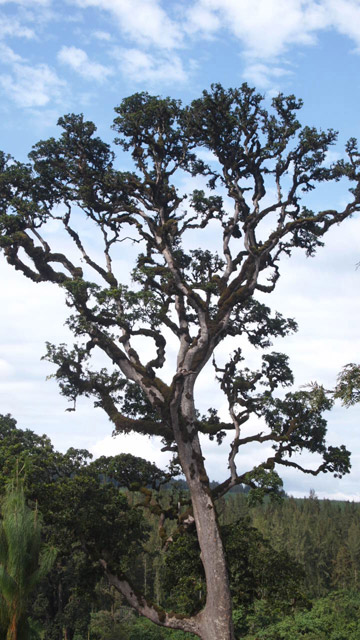 Tree stands amid forest. Photo by: Nika Levikov. |
Neil Burgess: Fairly…Increasingly we know where the important sites for biodiversity are and so targeting protected areas into places which have got the most important biological values or the most important ecosystem services values rather than just scattering them all over the place is a way to implement protected areas more fairly. But also [you need to] to consider if you’re going to put a reserve in a place where there are people, then how you are going to make sure their livelihoods really aren’t affected and just saying, “we’ll give them honey production facilities or something” isn’t going to be enough. Most of the evidence shows that it’s really hard to achieve a “no consequences” outcome for local people. The richer ones might do fine, but the poorer ones tend to do badly. So having more fairness also in the how you treat the people would be a lesson. So that’s…fairly: fairly for the biodiversity, fairly for the country, fairly for people and fairly across gender and wealth within communities.
Mongabay: In your opinion, how has tropical forest conservation changed over the last decade and are we going in the right direction?
Neil Burgess: I think it’s changed partly by the sort of things I’ve been saying. So there is more of an attempt to make it fair. At the same time, there is more of a realization that other people, oil palm planation managers [for example]…are not playing by those rules. They don’t give a damn whether it’s fair or not. So on the one hand, conservation NGOs and governments and conventions and agreements…are all trying to be more inclusive, more fair, more gender-friendly, more poverty-friendly…But you’re facing elephant poachers and rhino poachers and bushmeat hunters and agriculture developers who are definitely not playing by those fair rules. So, that makes a bit of a mismatch…If you’re trying to do conservation, making it fair, even if you’re succeeding in that, which is hard enough, and then you’re up against people who aren’t playing by those rules whatsoever, then it’s a bit tricky. So I think (at least in Africa), the coming of big business, Chinese interests, that’s sort of changed that dynamic. You’re up against people not playing by those rules at all, not by rules that you understand either.
Mongabay: So do you think this is the right direction to be taking?
Neil Burgess: I think for conservationists to be more socially inclusive and to try and do the right thing and try to persuade [institutions like] governments and companies …is good. How to deal with people hunting elephants with automatic rifles and helicopters and extreme corruption and big business companies who really just want the land, I don’t know whether we’re tackling that in the right way. But I think that gathering a large enough group of people who are doing it in the right way and then dealing with the people who are not is probably the morally right path even if it’s not the most effective path.
Related articles
How locals and conservationists saved the elephants of Mali amidst conflict and poverty

(04/02/2014) At a time when Africa’s elephants are facing a relentless poaching crisis, one community has managed to safeguard their elephants in the most unlikely of places: Mali. In a country that has suffered from widespread poverty, environmental degradation, and, most recently, warfare, a collaboration between conservationists and the local community has kept Mali’s elephants from extinction.
Next big idea in forest conservation? Offer health care for forest protection

(03/21/2014) Dr. Kinari Webb has a superpower: the ability to provide high-quality health care in a remote and rural landscape. And she uses her power not only to save lives, but also to protect the remaining Bornean rainforests. Twenty-one years ago, Kinari Webb traveled to Borneo to work with orangutans. She witnessed the faltering health of both the people and the environment and saw that the two issues were inseparable. When families must choose between the health of their children and the health of the forest that supports them, everyone loses. But in the region of Gunung Palung National Park — where an estimated 10 percent of the world’s orangutans live — illegal logging and slash and burn farming methods paid the bills and locals saw few alternatives. Kinari vowed to study medicine and return with more to offer.
Connecting forests, saving species: conservation group plans extensive wildlife corridor in Panama

(05/16/2014) With the cooperation of hundreds of ranchers and researchers, Azuero Earth Project aims to replant a swath of tropical dry forest, connecting the dry tropical forest on the coast to cloud forest further inland. The trees along the 140-kilometer (80-mile) wildlife corridor will create a continuous habitat for the Critically Endangered Azuero spider monkey (Ateles geoffroyi azuerensis) and improve the soil for people who farm and ranch along the way.